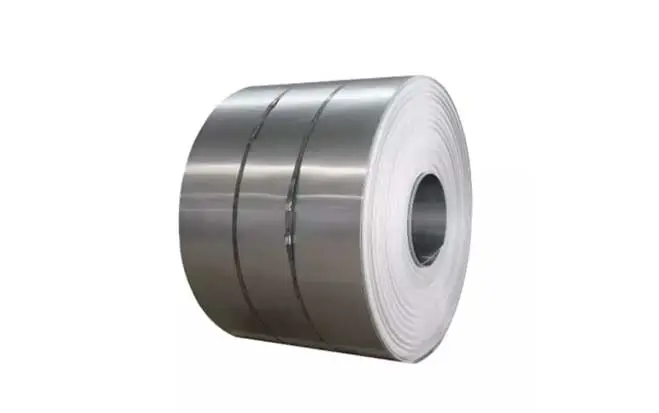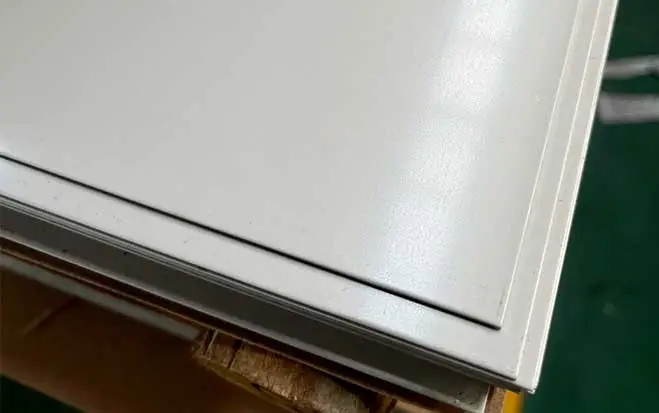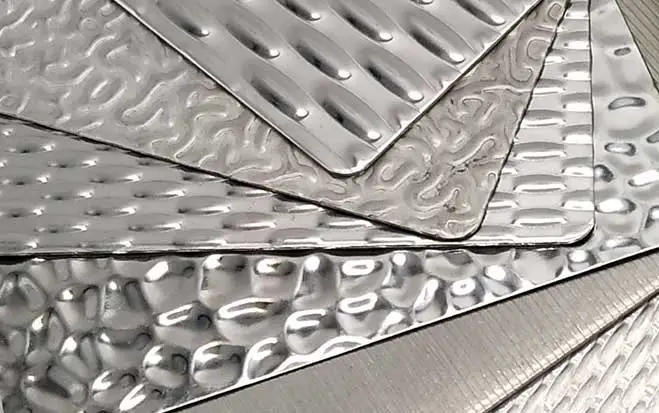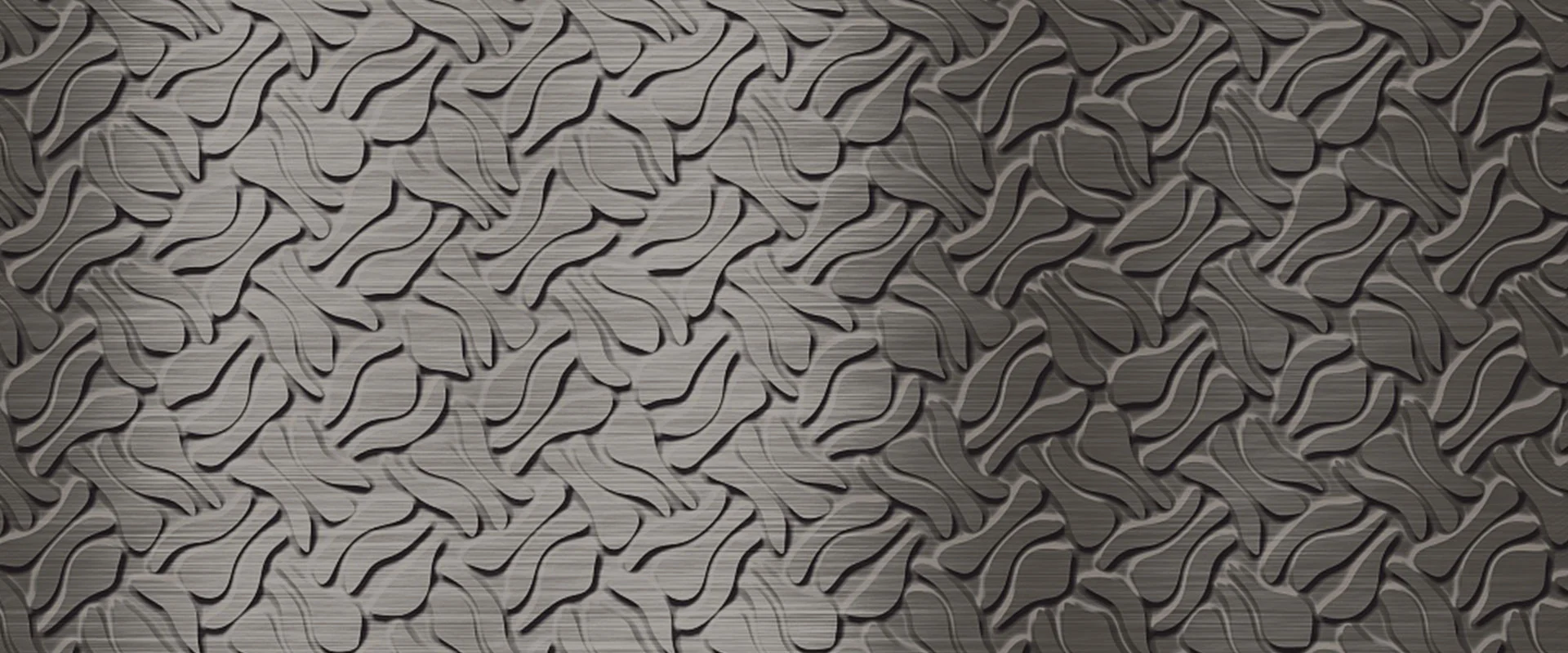
Etched stainless steel sheet is a type of stainless steel with a deeply etched pattern. It is achieved by applying a chemical or laser etching process and then adding a color coating. We specialize in supplying etched steel plate/sheet, including decorative panels, nameplates, signage and custom designs, which are widely used in architectural decoration, home decoration, electronics and industrial equipment. In addition, our professional team can customize etched steel designs according to the specific requirements of our customers, ensuring that every project can perfectly realize the customer's vision.
Etched stainless steel sheet is a type of stainless steel with a deeply etched pattern. It is achieved by applying a chemical or laser etching process and then adding a color coating. We specialize in supplying etched steel plate/sheet, including decorative panels, nameplates, signage and custom designs, which are widely used in architectural decoration, home decoration, electronics and industrial equipment. In addition, our professional team can customize etched steel designs according to the specific requirements of our customers, ensuring that every project can perfectly realize the customer's vision.
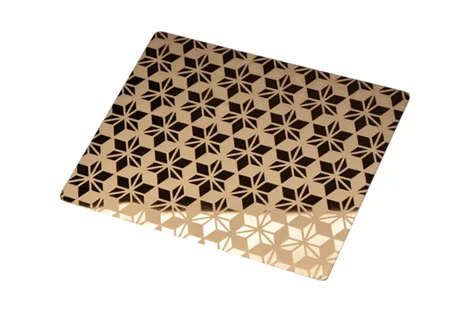
1. Unique and attractive designs: Etching stainless steel plate sheets can create intricate and detailed designs that are not possible through other fabrication methods, allowing for the creation of custom and unique designs.
2. Customization: The etching process allows for the creation of customized designs, logos, or text, making it ideal for branding or creating personalized stainless products.
3. Durability: Stainless steel is known for its durability, making etched stainless steel plate sheets long-lasting and resistant to wear and tear.
4. Corrosion resistance: Chemical etching stainless steel is highly resistant to corrosion, making it ideal for use in harsh or corrosive environments.
5. Versatility: Stainless steel etching plate sheets can be used in a wide range of applications, from decorative finishes to functional applications such as nameplates, signs, and control panels.
6. High-quality finish: Etching stainless steel plate sheets can create a high-quality finish that is smooth and precise, with sharp and well-defined edges.
7. Easy maintenance: Etched stainless steel plate sheets are relatively easy to maintain, requiring only regular cleaning with a mild detergent and soft cloth to keep them looking their best.
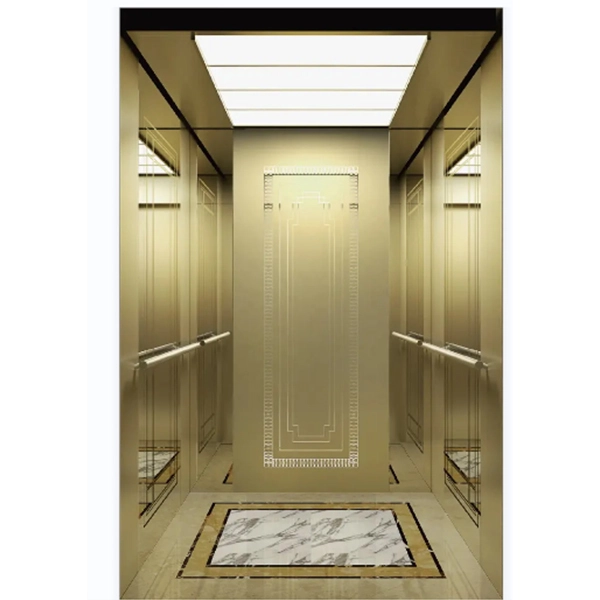
Architecture: Etched stainless steel plate sheets are used in architectural applications such as wall cladding, interior and exterior decoration, facades, and roofing.
Consumer products: Etched stainless steel plate sheets are commonly used in a variety of consumer products, including kitchen appliances, home decor, and electronics.
Automotive: Etched stainless steel plate sheets are used in the automotive industry for its durability and corrosion-resistant properties, particularly in the production of car trims and nameplates.
Electronics: Etched stainless steel plate sheets are used in the production of electronic components such as control panels, nameplates, and keyboards.
Aerospace: Etched stainless steel plate sheets are used in the aerospace industry for their durability, precision, and corrosion-resistant properties.
Industrial manufacturing: Etched stainless steel plate sheets are used in industrial manufacturing processes such as filtration, oil refining, and chemical production.
Art and design: The unique and attractive designs of etched stainless steel plate sheets make them a popular choice for artists and designers who want to create sculptural works or decorative finishes.
Medical: Etched stainless steel plate sheets are used in medical equipment and surgical instruments due to their hygienic and sterilizable properties.
To clean and maintain an etched stainless steel plate/sheet, follow these steps:
1. Use a mild detergent or specialized stainless steel cleaner. Avoid using abrasive cleaners or scouring pads, which can damage the surface or scratch the etched pattern.
2. Apply the cleaner to a soft cloth, and wipe the etched surface in the direction of the grain.
3. Rinse the surface thoroughly with clean water to remove any soap residue.
4. Dry the etched stainless steel plate sheet with a soft cloth, or allow it to air dry.
5. For stubborn stains or marks, use a non-abrasive scouring pad or stainless steel cleaner and gently rub the affected area.
6. To prevent further damage or deterioration, avoid using harsh chemicals, acidic cleaners, or cleaning tools with abrasive surfaces.
7. If the etched stainless steel plate sheet is exposed to saltwater or other corrosive substances, rinse it with fresh water and dry it promptly to prevent corrosion from developing.
Regular maintenance and cleaning can help to prolong the life and maintain the appearance of an etched stainless steel plate sheet, ensuring that it remains in good condition and retains its structural integrity over time.
This process involves coating the stainless steel plate sheet with a photoresist material, exposing it to the desired pattern, and then immersing it in an acid bath to selectively remove the exposed areas.
Waterjet etching involves using a high-pressure stream of water mixed with abrasive particles to cut the wholesale stainless sheet metal into the desired shape or pattern.
This process involves using a photographic technique to create a stencil or mask on the surface of the stainless steel, which is then exposed to a chemical solution to selectively remove the exposed areas.
Also known as electrolytic etching, this process involves passing an electric current through the stainless steel sheet while it is immersed in an electrolyte solution, resulting in the selective removal of metal from the surface.
Laser etching involves using a laser beam to melt and evaporate the surface of the stainless steel, creating a permanent mark or design.
Lithographic Etching is a high-precision process that uses UV light and acid-resistant masks to transfer intricate patterns onto stainless steel. It achieves micron-level detail, ideal for decorative panels, signage, and security markings.

